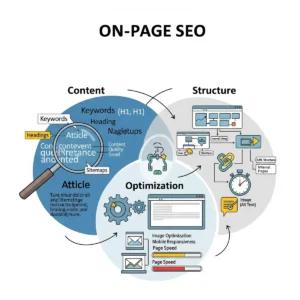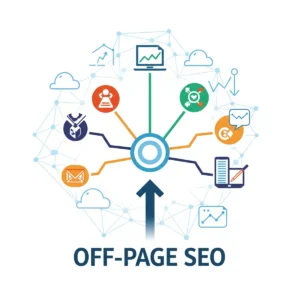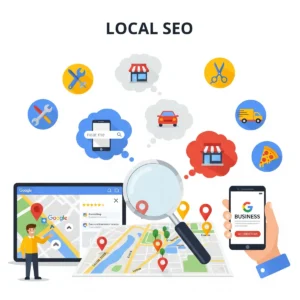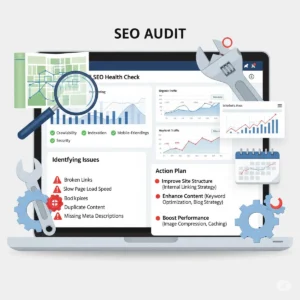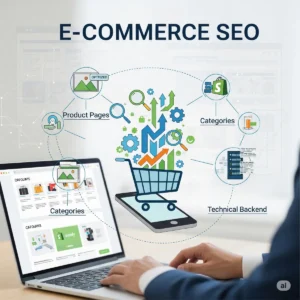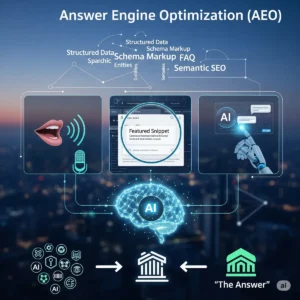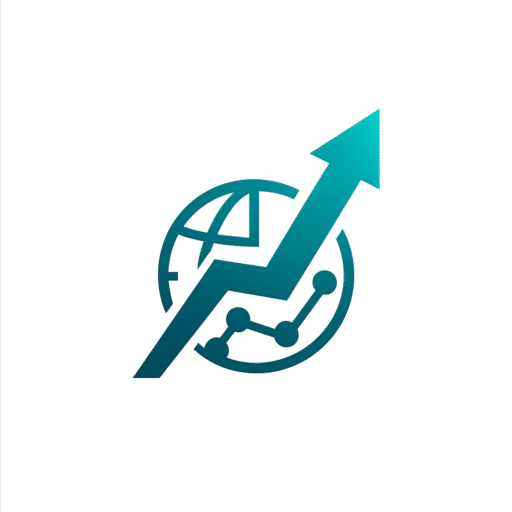How to Build a SaaS SEO Checklist
Step 1: Find Keywords for Each Stage in the Customer Journey
When I first worked on optimizing a project management SaaS website like ClickUp, the biggest challenge was aligning target keywords with every stage of the marketing funnel. To effectively create content that resonates with the target customer, I always start by mapping out the buyer journey and understanding what users want to learn, explore, or the problems they want the product to solve. At the Top-of-the-Funnel (ToFu), we focus on informational keywords and high-level concepts, addressing user questions and building awareness and interest. Tools like Keyword Magic Tool in Semrush and Google trends alternatives help identify searches around specific problems, solutions, or even general content ideas. For example, creating articles or templates for a content calendar template can help introduce potential users to your project management tool while subtly highlighting differentiators like agile methodology.

As users move to the Middle-of-the-Funnel (MoFu), their intent shifts—they are exploring, comparing, and evaluating options. Here, commercial keywords like salesforce vs zendesk, jira vs clickup, or best customer service CRM come into play. I always combine insights from competitors with Keyword Magic Tool filters like Intent filter and keyword difficulty filter to identify opportunities for product category keywords, keywords for product lists, and keywords for product alternatives. This stage is crucial for showing the benefits and differentiators of your services, often through reviews, testimonials, and product demos that guide the searcher toward the solution that meets their needs.

Finally, at the Bottom-of-the-Funnel (BoFu), users are ready to buy, and targeting transactional and navigational keywords becomes essential. This is where specific product feature pages, pricing overviews, and incentives encourage action. Keywords such as Canva AI image generator, Hubspot prices, and Mailchimp alternatives can drive HIGH conversion potential when paired with persuasive content emphasizing the service, pricing, or action the user should take. I also monitor Organic Search Positions for overlap between sales funnel stages and adjust strategies to optimize both visibility and conversions. Using a CRM like Salesforce.com or insights from Hotjar can further refine how content aligns with the sales funnel while maintaining a high net promoter score.
Step 2: Spy on Your Competitors’ Keywords
When I dive into analyzing rivals in the SERPs, the first step is to identify your direct competitors, the sites that are competing for the same target keywords and serving a similar target audience. I start by building a list of competitors’ products and services and then use tools like Semrush Keyword Gap tool to see which keywords they rank for and which ones you might be missing. Applying the Missing filter and custom KD filter makes it easier to spot useful opportunities for creating content and plugging gaps where competitors are strong or absent. I also pay attention to Position, Top 10, and the Intent drop-down to separate Informational, Commercial, and Transactional keywords. This process highlights untapped opportunities that can be leveraged to gain a competitive edge, improve your rank, and capture more of the audience that might otherwise go to Salesforce.com or other competitors.

Key Takeaways
- Identify direct competitors targeting the same audience
- Use Semrush Keyword Gap tool to assess where competitors rank
- Apply filters like Missing, Position, and custom KD filter
- Separate keywords by Intent: Informational, Commercial, Transactional
- Find untapped opportunities to create content and plug gaps
- Focus on competitors’ products, services, and Top 10 positions
Step 3: Create Product-Led Content for Your Target Keywords
In building a strong SaaS content strategy, I always focus on product-led content that highlights the features of your product while aligning with target keywords. One of the most effective ways to do this is to build landing pages that are tailored for Commercial Keywords and Transactional Keywords, creating dedicated product pages or feature pages with consistent calls to action. Each page should guide potential customers toward a specific action like a purchase or signing up for a free trial. Using tools like Loom for async video or Hotjar to understand user behavior helps craft benefit-packed headlines, context-driven title and headings, and a clear CTA like Contact Sales that resonates with the customer persona and demonstrates how the product can solve problems.
Alongside landing pages, it is essential to write helpful blog content using Informational Keywords to drive visitors to your SaaS website. Optimized blog posts in the form of an ultimate guide, list, or case study with engaging headlines, active voice, visuals, screenshots, pictures, and infographics make complex concepts easier to understand. Incorporating insights from psychographics, personas, and market research platforms like Wynter ensures content speaks to a highly targeted audience, increasing relevance and organic search traffic. Using content calendar templates in ClickUp or testing email subject lines with Omnisend adds structure to your publishing schedule and improves lead generation.
Finally, I always experiment with content formats to diversify SaaS websites strategies. Webinars, infographics, podcasts, and lead magnets attract a qualified audience and drive high conversion potential. The goal is to incorporate value and brand expertise consistently, helping potential customers move from interest to action. Every high-converting landing page, blog, or interactive format should make it clear how your products or solutions address needs, encouraging the user to perform action that benefits both the company and the customer.
Key Takeaways
- Build landing pages and feature pages with focused CTA for commercial and transactional keywords
- Use helpful blog content with informational keywords to drive visitors and improve organic search traffic
- Highlight product features and solutions clearly for potential customers
- Incorporate visuals, infographics, and active voice to make complex concepts easy to understand
- Experiment with content formats like webinars, podcasts, and lead magnets
- Utilize tools like Loom, Hotjar, ClickUp, Omnisend, and Wynter to enhance content effectiveness
Step 4: Boost Your On-Page SEO
When optimizing a SaaS website, on-page SEO is crucial for making sure every page performs well in the SERP and drives clicks from your target audience. I focus on strategically placing target keywords, synonyms, and variations throughout the introduction, main headings, and subheadings to maintain natural flow without keyword stuffing. Optimized title tags and meta descriptions are essential—they should be unique, keyword-rich, summarize the content, and include a call to action that encourages the searcher to engage with your product. Tools like Exploding Topics help identify trending search term variations and uncover insights for free tools or paid tools to find trends in your niche. Incorporating Keywords in content, extra links, and internal links between pages improves readability and navigation, while Canva AI image generators, AI-generated images, or ai photo generator content enhances visual appeal, keeping users engaged.

Organizing content with a clear hierarchy using H1 tags for the headline, H2s for main subtopics, and H3s/H4s for sub-subtopics breaks information into readable chunks that both users and search engines can skim easily. Embedding links to other pages, referencing your ClickUp workflow, or sharing a monthly content calendar template increases credibility and encourages further exploration. The goal is to make every page not only search-friendly but also practical and actionable, turning visits into leads or conversions.
Key Takeaways
- Place target keywords, synonyms, and variations naturally in headings and content
- Use optimized title tags and meta descriptions with calls to action
- Organize content with H1, H2, H3, H4 hierarchy for readability
- Include internal links to related pages and resources
- Use AI image generators or visual tools like Canva for engaging visuals
- Monitor trends with Exploding Topics and search term variations to keep content relevant
- Break content into readable chunks for users and search engines
Step 5: Run an SEO Site Audit
Running a thorough SEO audit is essential for identifying and fixing existing SEO issues on your SaaS website. I start by analyzing the site crawl results to sort out quick fixes and prioritize major issues that could be affecting search results. Technical SEO is often a major factor, including Slow Page Load Times, Bounce Rate, and Core Web Vitals. Using tools like PageSpeed Insights, Backlinko guides, and Diagnostics, I check for problems like removing or deferring JavaScript, optimizing third-party scripts, upgrading web hosts, and compressing large page elements or minifying CSS to help pages load faster for both users and search engines. These improvements not only reduce bounce but also increase the chances of converting visitors into paying customers.

For indexing issues, I monitor Google Search Console to identify Pages not indexed, Not found 404 URLs, and Crawled – currently not indexed pages. Evaluating page quality and site quality ensures the overall website architecture, title tags, meta descriptions, and images are optimized. I often run extensive audits of the entire site using Screaming Frog to crawl 500 URLs and gain actionable insights, including broken links and internal link optimization opportunities. Semrush Site Audit is another excellent auditing tool that highlights up to 140 issues, helping identify where attention is needed. For smaller sites, a free Semrush account can audit 100 URLs, while a 14-day trial or Semrush Pro subscription allows a more in-depth analysis.

Key Takeaways
- Analyze the site to find existing SEO issues and prioritize major vs quick fixes
- Focus on Technical SEO: page load times, Core Web Vitals, and bounce rate
- Fix JavaScript, third-party scripts, large page elements, and CSS to improve performance
- Monitor Google Search Console for indexing issues and 404 errors
- Use Screaming Frog or Semrush Site Audit to crawl URLs and gain insights
- Optimize site architecture, title tags, meta descriptions, images, and internal links
- Consider free tools or trials for smaller sites, upgrade to Semrush Pro for full audits

Step 6: Use Video SEO to Rank Higher and Boost Conversions
For SaaS businesses, Video SEO is an often untapped opportunity that can dramatically improve visibility and boost conversions. Studies show that 77% of people research before they buy software or apps, making videos an ideal way to engage and educate your audience. By optimizing video content around target keywords, you can increase ranking in the Google SERP while showcasing product features and demonstrating how your product can solve problems. I often create product walkthroughs, high-detail explanations, and customer testimonials to illustrate results and impact, making it easier for potential customers to understand the value of a service or product.
Both long-form videos and thought leadership content, such as in-depth guides and detailed product demos, provide depth and authority, while short-form videos answer questions quickly and capture attention for immediate engagement. Tools like Semrush Keyword Magic Tool help identify the best queries to target, while Advanced filters and SERP Features insights show where videos appear, including Video carousels or Feature videos. Incorporating video in email marketing campaigns or linking from your Canva tutorials, like how to make an infographic, further increases engagement and directs viewers back to your site.
Key Takeaways
- Video SEO is a powerful, often untapped channel for SaaS businesses
- Optimize videos around target keywords to improve Google SERP ranking
- Use product walkthroughs, detailed demos, and customer testimonials to showcase product features and impact
- Balance long-form content for depth and short-form videos for quick answers
- Leverage Semrush Keyword Magic Tool to find high-potential queries
- Monitor SERP Features like Video carousels to maximize visibility
- Integrate videos into email marketing and tutorials to drive conversions
Step 7: Get High-Quality Backlinks
Building backlinks remains one of the strongest ranking signals for Google, as both the quality and quantity of links influence your site’s authority. For SaaS businesses, focusing on popular, reputable websites that are relevant to your product or solution is key. I often start with link building strategies like broken link building, using tools like Semrush Backlink Analytics to identify competitor domains, Indexed Pages, Broken Pages, and Referring Domains. By reaching out to sites with 4xx status codes or current broken links, you can offer your resources as a replacement, demonstrating benefits for both the prospect and users. Keyword gap analysis and Backlink Gap tool also help find lucrative link building prospects based on competitor backlinks.

Creating Power Posts and Original Research is another effective tactic to naturally drive backlinks. Articles that include shares, visuals, illustrations, or custom designs attract attention and encourage other websites to link to your resources. For example, Mailchimp email marketing benchmarks or research posts showing 12K backlinks from 4.4K domains can serve as a link bait by offering real-world examples, high-detail insights, or Hotjar heatmaps that demonstrate the experience of using your product. The goal is to create content that provides value and encourages linking, improving traffic while reinforcing your authority in the SaaS space.

Key Takeaways
- Focus on high-quality, relevant backlinks from reputable websites
- Use Semrush Backlink Analytics to analyze competitor domains and broken pages
- Implement broken link building by offering your content as a replacement for 4xx status code links
- Conduct keyword gap analysis to identify lucrative link building prospects
- Create Power Posts and Original Research with visuals, illustrations, and custom designs
- Provide real-world examples and high-detail content to naturally attract backlinks
- Track success using metrics like Referring Domains and total backlinks to monitor growth

Start Optimizing Your SaaS Website with Our Checklist
SaaS SEO Fundamentals: Audience, Product, and Conversions
Understanding SaaS SEO starts with focusing on three critical areas of your business: audience, product, and conversions. To optimize a website and improve rankings in search engine results pages (SERPs), I always begin with keyword research to identify target keywords that align with search intent. This ensures that every SEO strategy, from on-page optimization to technical SEO and link building, is designed to attract potential customers while highlighting your product and its benefits. The goal is to create content that not only builds awareness and authority for your brand but also guides users toward actions that improve conversion rate.
A successful SaaS SEO approach balances these three pillars by growing traffic sustainably without relying on ads. By mapping search intent to your products and services, I can craft SEO strategies that target the right audience at the right stage of their journey. Every piece of content, whether blog posts, landing pages, or feature guides, should serve a purpose—either educating, solving a problem, or persuading users to take the next step. This structured focus across three areas ensures that all critical SEO efforts contribute to long-term visibility, engagement, and conversions.
Key Takeaways
- Focus on audience, product, and conversions as the core of SaaS SEO
- Conduct keyword research to align with search intent and target keywords
- Use on-page optimization, technical SEO, and link building to attract potential customers
- Create content that builds brand authority and awareness
- Design strategies to grow traffic sustainably without relying on ads
- Align all SEO efforts to improve conversion rate and guide user actions
1. You Need to Use Customer Personas
For effective SaaS marketing, building customer personas is a foundational step. Creating a detailed profile of your ideal customer helps identify the target audience and tailor strategies that drive readers from your blog to convert and ultimately become customers. I use tools like Semrush Persona to analyze competitor domains and gather insights on demographics such as location, age, family status, and education level, as well as behavior and preferred communication channels. Knowing which content types and topics of interest resonate allows for SaaS marketers to produce content that attracts the right audience and encourages engagement.

Beyond demographics, I also focus on psychographics, capturing personality, values, attitudes, interests, lifestyle, hobbies, needs, main problems, motivations, frustrations, and aspirations. Understanding these aspects informs content and product positioning that align with the user’s decision-making process and purchase decisions. Platforms like One2Target can provide deeper socioeconomics insights to refine these customer personas, helping to attract visitors, meet their needs, and guide them toward conversion.
Key Takeaways
- Build customer personas with demographics: location, age, family status, education level
- Include psychographics: personality, values, interests, lifestyle, hobbies, needs, frustrations, motivations
- Analyze competitor domains with tools like Semrush Persona for benchmarking
- Tailor content types and topics of interest to the persona
- Use personas to attract visitors and guide them to convert into customers
- Consider socioeconomics and behavioral patterns for a complete picture
2. You Need to Provide Value with Product-Led Content
For SaaS companies, creating product-led content is one of the most effective ways to attract organic visitors and help them become familiar with your product before they commit to a purchase. The goal is to cover topics that focus on a solution to a problem while aligning with search intent. I often analyze high-value search terms and specific keywords using tools like Keyword Overview to identify topics such as content calendar templates or Notion templates. Offering free-to-use pages or content calendars helps demonstrate features and potential benefits to users, encouraging them to try your product. For example, HubSpot and an email signature generator have leveraged free tools with large user bases—100K users in the case of email signature tools—to convert potential customers into paying customers by letting them experience value first.

The key is creating content that balances education with promotion, allowing potential customers to explore your SaaS product through free tools and tutorials while reinforcing SaaS SEO best practices. Topics should cover comprehensive solutions, showcase features, and emphasize the potential benefit of the product, giving users a reason to engage and eventually commit. This strategy also targets high-value search terms, ensuring your content ranks for queries that matter most to your audience and drives both awareness and conversions.

Key Takeaways
- Use product-led content to attract organic visitors and familiarize them with your product
- Align content with search intent and focus on solutions to problems
- Offer free-to-use pages or tools like Notion templates or content calendars
- Highlight features and potential benefits to encourage trying before buying
- Target high-value search terms to boost ranking and attract the right audience
- Balance educational content with subtle promotion to convert potential customers
3. You Need to Tailor Your Strategy to the Marketing Funnel
A successful SaaS SEO strategy always aligns content creation with the marketing funnel, ensuring that users at each stage of the buying cycle receive content that meets their intent. At the ToFu (top of the funnel), the focus is on awareness stage content like informational guides that highlight a problem your product or service can solve. For example, creating a guide for an email marketing provider like Omnisend, targeting ToFu terms such as how to send an automated email, can capture users just beginning to explore solutions. This type of content is optimized to appear in the Google SERP for broad queries like mass email service, attracting a wide audience and building familiarity with your brand.

Moving into the MoFu (middle of the funnel) stage, users are evaluating options and comparing features. Here, content should demonstrate the value of your solution relative to competitors and help users understand how your SaaS product solves their specific problems. Finally, at BoFu (bottom of the funnel), users are very close to buying, so content should target BoFu keywords like omnisend pricing or provide resources like a free sales funnel template to help them take action. Tailoring content for each stage of the Content Marketing Funnel ensures that your product is visible and persuasive throughout the user journey, increasing the likelihood of conversion.
Key Takeaways
- Align content creation with each stage of the marketing funnel: ToFu, MoFu, BoFu
- At ToFu, focus on awareness content and informational guides to capture interest
- At MoFu, highlight comparisons and demonstrate how your product solves problems
- At BoFu, target keywords for users very close to buying and provide actionable resources
- Use tools like Omnisend and Google SERP insights to optimize content for search intent
- Tailored content across the funnel drives awareness, engagement, and conversion
Why You Need SEO for Your SaaS Website
SEO is crucial for SaaS businesses because it is one of the most effective ways to attract potential customers who are directly looking for your product or solution. By optimizing your channel for organic traffic, you can reach users actively searching for what you offer, making your marketing more precise and impactful. Unlike paid advertising, SEO is a cheaper long-term strategy that allows you to scale sustainably while building brand authority and increasing visibility in search results. A strong SEO foundation ensures your SaaS website consistently drives qualified traffic and maximizes conversions without relying solely on ad spend.
Key Takeaways
- SEO is important for reaching users actively searching for your product
- Drives organic traffic and reduces reliance on paid advertising
- Helps SaaS businesses scale sustainably and cost-effectively
- Positions your brand as an authority and improves long-term visibility
- Attracts potential customers efficiently and effectively
Get Clicks Without Paying for Them
For a SaaS business, creating SEO-optimized content is one of the smartest ways to drive traffic and convert customers without paying for clicks. Instead of relying on paid ads for quick results, investing in long-term value through a strong SEO strategy can attract highly qualified traffic consistently. For example, a top-ranking page from CRM provider Monday.com for the keyword crm with inventory management has held top 2 positions in the Google SERP for over 12 months, showing how an updated, maintained post provides long-term benefits. Using tools like Semrush Organic Positions helps track performance, ensuring content continues to meet search intent and drives visitors, brand awareness, and potential customers to your SaaS product.

This approach also reduces Customer Acquisition Costs (CAC), as the initial cost to create content and optimize SEO is often lower than repeatedly spending money to acquire new customers through paid ads. Combining content marketing insights from experts like Eliana Atia, group lead on the How the Fxck SEO podcast, with a multi-pronged value strategy lets your company leverage SEO as a sustainable acquisition channel. Regular content maintenance, updates, and careful optimization help attract leads, keep your content competitive in a crowded space, and maximize the cost per acquisition over time.

Key Takeaways
- Use SEO-optimized content to attract highly qualified traffic without paying for clicks
- Maintain top-ranking pages for long-term benefits and sustainable traffic
- Track performance with Semrush Organic Positions and optimize posts regularly
- Reduce Customer Acquisition Costs (CAC) compared to paid ads
- Leverage content marketing strategies to build brand awareness and meet potential customers
- Focus on content maintenance, updates, and optimization to remain competitive
- Treat SEO as a long-term investment that drives leads and conversions
FAQs
1. What is SEO for SaaS?
SEO for SaaS is the process of optimizing a software-as-a-service website to attract organic traffic, increase visibility in search engine results pages (SERPs), and convert visitors into customers. It involves keyword research, on-page optimization, technical SEO, content marketing, and link building specifically tailored to the SaaS business model. The goal is to help potential users find your product, understand its value, and take action without relying solely on paid advertising.
2. What are the 4 types of SEO?
The four main types of SEO are:
- On-Page SEO – Optimizing content, headings, images, meta tags, and internal links.
- Technical SEO – Improving website speed, crawlability, indexability, structured data, and site architecture.
- Off-Page SEO – Building high-quality backlinks and establishing domain authority.
- Local SEO – Optimizing for location-based searches, Google Business Profile, and local listings.
3. What is the SEO checklist?
An SEO checklist is a structured list of tasks to optimize a website and improve search rankings. Typical items include:
- Conducting keyword research aligned with search intent.
- Optimizing title tags, meta descriptions, and headings.
- Ensuring site speed and mobile-friendliness.
- Implementing internal linking and sitemap updates.
- Checking for indexing errors, broken links, and crawl issues.
- Creating high-quality content and building backlinks.
- Tracking analytics and making data-driven improvements.
4. What are the 3 C’s of SEO?
The 3 C’s of SEO are:
- Content – High-quality, valuable content that satisfies user intent.
- Code – The technical aspects of your website, including clean HTML, structured data, and fast-loading pages.
- Credibility – Authority and trust signals, such as backlinks, reviews, and domain reputation.
5. What are the 4 pillars of SEO?
The 4 pillars of SEO are:
- Technical SEO – Ensures your site is crawlable, indexable, and fast.
- On-Page SEO – Optimizes content, headings, meta tags, and keyword usage.
- Content SEO – Focuses on creating high-value content for users.
- Off-Page SEO – Builds authority through backlinks, social signals, and outreach.
6. What are the 9 types of keywords in SEO?
The 9 types of keywords commonly used in SEO are:
- Informational Keywords – Users want to learn something.
- Navigational Keywords – Users look for a specific site or brand.
- Transactional Keywords – Users are ready to buy.
- Commercial Investigation Keywords – Users compare products or services.
- Short-Tail Keywords – General and broad search terms.
- Long-Tail Keywords – Specific, longer phrases with lower competition.
- Branded Keywords – Include a company or product name.
- Geo-Targeted Keywords – Include a location to target local searches.
- LSI (Latent Semantic Indexing) Keywords – Related terms and synonyms to support main keywords.

